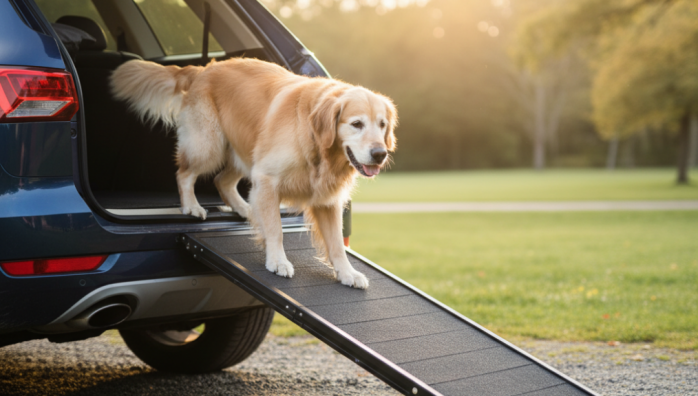Ramps and Support Slings for Older Dogs
by admin in Pet Care Basics 24 - Last Update November 25, 2025

Watching my old friend, a lanky Shepherd mix, start to hesitate before hopping into the car was one of the first signs that his golden years were truly upon us. That small pause spoke volumes. It wasn\'t just about the jump; it was about his confidence and comfort. It’s a moment I think many of us with senior dogs know all too well. It sent me down the path of exploring mobility aids, and honestly, finding the right ramps and slings was a game-changer for preserving his dignity and our shared adventures.
When a dog ramp becomes essential
I initially thought ramps were just for dogs with severe issues, but I quickly learned they are a powerful preventative tool. The daily impact of jumping in and out of a car or on and off a bed puts incredible strain on aging joints, especially for dogs with early signs of arthritis or hip dysplasia. For us, the car was the biggest hurdle. A ramp transformed a stressful, sometimes painful, event into a calm and easy routine.
What i learned to look for in a ramp
Not all ramps are created equal, and I\'ve seen a few flimsy ones. Through trial and error, I developed a personal checklist:
- The surface is everything: It must be high-traction. Whether it\'s a sandpaper-like finish, rubber, or artificial turf, your dog needs to feel secure. A slip can set your training back to square one.
- Width and incline matter: A ramp that\'s too narrow can feel like a tightrope to a wobbly dog. Likewise, a ramp that\'s too short for the height creates a steep, intimidating incline. I always measured the height of my car\'s entry point to ensure the ramp length was appropriate.
- Portability and weight: Since I was using it for the car, I needed one that could fold up and wasn\'t too heavy for me to handle on my own. An aluminum or sturdy plastic ramp was the sweet spot for us.
The surprising value of a support sling
While the ramp solved our car problem, it wasn\'t practical for helping him up the three steps from the backyard or for navigating the house on his \'bad\' days. This is where a support sling became our closest companion. I think of it as a helping hand—a way to take some weight off his aching hind legs without me having to awkwardly lift him and risk hurting us both.
Choosing the right kind of sling
Slings come in a few varieties, and the right one depends entirely on where your dog needs the support.
- Rear-lift harnesses: These were perfect for us. They focus solely on supporting the hips and hind legs. Ideal for dogs with hip dysplasia or arthritis in their back legs.
- Front-lift harnesses: Best for dogs with weakness or injury in their front legs or shoulders.
- Full-body slings: These offer comprehensive support and are often used for post-operative recovery or dogs with more significant mobility challenges. They distribute the weight most evenly.
The key for me was finding one with soft, padded materials and adjustable straps. It allowed me to provide support without causing any chafing or discomfort. Introducing these tools requires patience and lots of positive reinforcement. I started by just laying the ramp flat on the ground and rewarding him for sniffing it, then for putting one paw on it. We made it a fun game, not a chore. These simple tools didn\'t just help my dog get around; they gave him back a piece of his independence and allowed us to enjoy our time together, right to the very end. Of course, this is what worked for my best friend; I always recommend having a conversation with your veterinarian to create the best mobility plan for your specific dog\'s needs.














